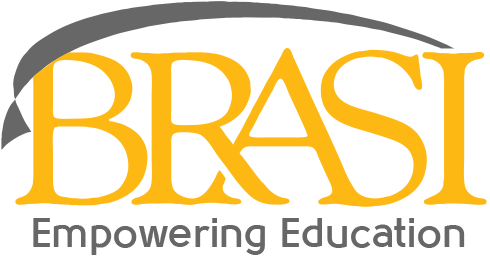How do successful businesses stay ahead of the curve while keeping their performance metrics strong? It’s not magic. It’s all about the right indicators. Leading and lagging indicators are two powerful tools that help organizations navigate their way to success.
But what exactly are they? And how can you use them effectively?
Let’s dive in and break it down.
1. What Are Leading and Lagging Indicators?
Leading indicators predict future outcomes. They show where you’re heading. Think of them as road signs pointing toward your destination.
Lagging indicators, on the other hand, measure past results. They tell you how well you’ve done. It’s like looking in the rearview mirror to see how far you’ve come.
Here’s an example:
- Leading Indicator: Number of hours spent on training employees.
- Lagging Indicator: Customer satisfaction scores after the training.
Both are important. They work together to provide a complete picture of success.
2. Leading vs. Lagging Indicators: The Key Differences
Let’s compare these two metrics side by side:
- Leading Indicators: Predictive, forward-looking, and action-oriented.
- Lagging Indicators: Retrospective, results-based, and reflective.
For example:
- If you’re running a marathon, your training routine is a leading indicator. Your finish time? That’s a lagging indicator.
Want a visual? Imagine a table:
| Feature | Leading Indicator | Lagging Indicator |
| Focus | Future outcomes | Past performance |
| Timing | Proactive | Reactive |
| Example in Marketing | Social media engagement | Revenue growth |
3. Why Are Leading and Lagging Indicators Important?
These metrics aren’t just buzzwords. They’re essential for guiding strategies and making decisions.
Leading indicators help you anticipate problems. Lagging indicators validate whether your strategies worked.
Imagine you’re driving. Ignoring leading indicators is like not watching the road ahead. Over-relying on lagging indicators is like only checking your rearview mirror. A mix of both ensures you reach your destination safely.
4. Leading and Lagging Indicator Examples in Different Fields
Safety
- Leading Indicator: Number of safety drills conducted.
- Lagging Indicator: Number of workplace accidents reported.
Marketing
- Leading Indicator: Website traffic growth.
- Lagging Indicator: Conversion rates.
Supply Chain
- Leading Indicator: On-time supplier deliveries.
- Lagging Indicator: Customer satisfaction with delivery timelines.
These examples show how leading and lagging indicators complement each other in various industries.
5. Leading vs. Lagging Indicators in Supply Chain
In supply chain management, leading and lagging indicators play a critical role in optimizing operations:
- Leading Indicators: Forecast accuracy, supplier on-time delivery rates, and production schedule adherence. These metrics help predict potential disruptions and improve efficiency.
- Lagging Indicators: Inventory turnover, order fulfillment times, and transportation costs. These provide a historical view of performance and help evaluate the effectiveness of strategies.
By balancing both types of indicators, supply chain managers can proactively address issues, reduce waste, and enhance overall performance.
6. How to Use Leading and Lagging Indicators Effectively
Using these indicators isn’t rocket science. Here’s how to do it:
Identify Your Goals
- Start with your endgame. What do you want to achieve?
Choose Relevant Indicators
- Align them with your objectives. For example, if you want faster delivery times, monitor lead times (leading) and delivery success rates (lagging).
Review Regularly
- Metrics aren’t static. Adjust them as your goals evolve.
Leverage Technology
- Use data analytics tools to track and analyze indicators effectively.
7. Common Misconceptions and Pitfalls
It’s easy to misunderstand these metrics. Here are a few common pitfalls:
Over-Reliance on Lagging Indicators:
- Problem: They only show past results, not future opportunities.
- Solution: Balance them with leading indicators.
Confusing Leading Indicators with Goals:
- Problem: Leading indicators are predictive, not outcomes.
- Solution: Use them as signals, not end goals.
Ignoring Context:
- Problem: Metrics vary by industry and business type.
- Solution: Tailor indicators to your specific needs.
8. Case Studies: Applying Leading and Lagging Indicators
Case Study 1: Marketing Campaign
A retail company wanted to boost holiday sales. They:
- Used leading indicators like email open rates and social media shares to predict customer interest.
- Monitored lagging indicators such as total sales and ROI to measure success.
Result? They adjusted their campaign mid-way, leading to a 20% increase in sales.
Case Study 2: Workplace Safety
A manufacturing plant focused on reducing accidents. They:
- Tracked leading indicators like safety inspections and employee training sessions.
- Measured lagging indicators like accident reports.
Result? A safer workplace and a significant drop in incidents.
9. Emerging Trends in Leading and Lagging Indicators
The world of metrics is evolving. Here’s what’s new:
AI and Predictive Analytics:
- Tools like machine learning help identify patterns in leading indicators.
Digital Twins:
- Virtual models simulate outcomes, offering deeper insights into indicators.
Sustainability Metrics:
- Companies now track eco-friendly practices as part of their indicators.
10. Conclusion
Leading and lagging indicators help businesses predict and measure success effectively. Whether you’re planning a marketing campaign, ensuring workplace safety, or improving supply chain efficiency, these metrics are your secret weapons.
So, what are you waiting for? Start evaluating your current metrics today.
Balance your leading and lagging indicators, and watch your success soar.
What is the difference between leading and lagging indicators?
Leading indicators predict future outcomes, while lagging indicators measure past results.
What are some examples of leading indicators?
Examples include social media engagement, safety training sessions, and website traffic.
Why are lagging indicators important?
They validate the success of strategies and highlight areas for improvement.
Can KPIs be both leading and lagging indicators?
Yes, some KPIs can function as both, depending on how they’re used.
How can businesses balance leading and lagging indicators?
By identifying goals, aligning metrics, and regularly reviewing and adjusting strategies.

We have been offering extensive and well-planned pieces of training in the field of economics, supply chain, and operations management. Our core purpose is to help industry professionals and businesses to succeed in an ever-evolving competency in the jobs market. Our cutting-edge training methods and up-to-date knowledge aligned with the latest industry trends and demands put our candidates in the lead amongst other job seekers and competitors in the market.
- BRASI Editorial Team#molongui-disabled-linkSeptember 3, 2024
- BRASI Editorial Team#molongui-disabled-linkOctober 8, 2024
- BRASI Editorial Team#molongui-disabled-linkNovember 19, 2024








